A huge variety of silicone products are available for the kitchen including potholders, spatulas, whisks, universal silicone lids, and many other utensils made of metal with silicone coatings. There is also a huge range of bakeware and storage items such as rolling pins, ice cube trays, springform baking pans, muffin pans, bread tins, cupcake bakers, and many more. The main advantage of silicone goods is that they are flexible and have non-stick surfaces. This makes extracting the cooked cakes and muffins much easier to do. Silicone pans and utensils are very easy to clean as food does not stick to them and baked-on remnants are very easy to remove.
Silicone bakeware has been promoted as the environmentally friendly replacement for disposable containers such as cupcake papers and baking paper and is generally much easier to use.
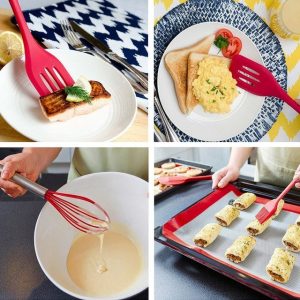
Silicone bakeware It can go directly from the freezer to the oven, and from oven to freezer. Silicone goods are safe in the microwave safe and are very easy to clean. While silicone bakeware does not generally require rubbing with oil or butter, it is still a good idea to prevent sticking and make the baked goods much easier to remove. Spray oils are a good idea.
One of the big advantages of silicone kitchen utensils is their resistance to damage by heat. Silicone utensils can resist temperatures up to 400 degrees Fahrenheit. So no more burning wooden spoons or other items you happen to leave in the pot or frying pan. The silicone utensils won’t usually melt if you accidentally leave them in a pan or pot while cooking.
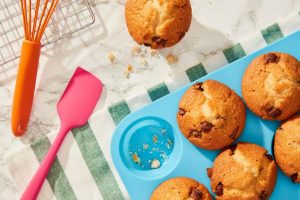
Silicone utensils are much easier to clean and maintain. They can be safely washed in the dishwasher or hand-washed using soapy water and a brush. Silicone kitchen utensils are also very hard to stain so they always look new with their vibrant colors.
Silicone kitchen utensils do scratch, but it does not matter as it does not make them any harder to keep clean. Some simple precautions are needed to stop scratching your silicone utensils and bakeware. Unlike non-stick coasting, where a few scratches can ruin them, silicone goods are not really affected by scratches.
Master the Art of Baking with Professional Silicone Baking Molds: Top Benefits Revealed
There is not a lot of detailed information available on silicone and its health. Silicone, a synthetic rubber polymer, is extensively utilized in our kitchens, helping to design perfectly uniform desserts with articles like silicone chocolate molds, and particularly savarin mini, contributing to the efficiency and refinement of our baked goods. This versatile material is synthesized by amalgamating silicon, a natural component abundant in sand and rock, with carbon, hydrogen, oxygen, and sometimes a trace of other elements. So safe is silicone, that you could eat substantial pieces without adverse effects.
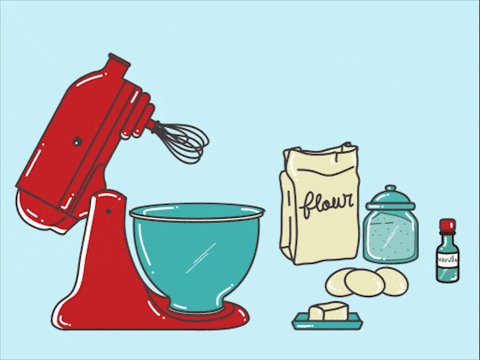
Endorsed by various food standard boards globally, including the US Food and Drug Administration (FDA), food-grade silicone has been approved for all food-related uses, from storage to baking. Nonetheless, concerns have been raised concerning certain chemicals used as fillers and colors in inferior-grade silicone bakeware, which mimic the quality of molds manufactured by leading brands, like the Fat Daddio’s, which offer excellent affordability with the 7oz brioche silicone baking mold and the 3oz heart silicone baking mold at $8.99 and $8.50 respectively or the, particularly affordable, financier silicone with multiple cavity option. Therefore, it’s sensible to opt for reputable brands and always scrutinize the labels. Declared non-toxic to environmental or plant life, although not biodegradable, silicone’s recyclability and potential as a substitute to many disposable alternatives enhance its appeal.
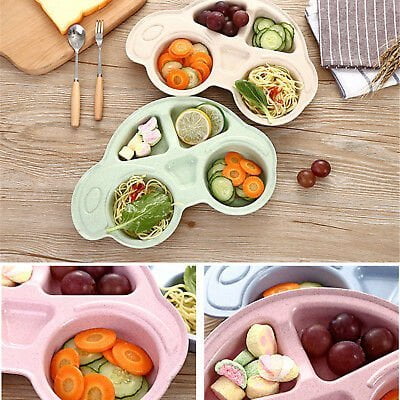
Promoted for being inert and stable, with no taste or odor, silicone as used in top-notch products like the pastry baking mat or the popular muffin silicone baking mold, does not impair or affect the quality of your desserts, given it’s not subjected to extreme heat beyond its maximum recommended threshold (usually around 220 degrees C or 428 degrees F). Given its durability, it’s safe for usage in microwaves and dishwashers. It’s also ideal for storing pastries in the refrigerator and freezer, amplifying the functionality of silicone mats in every kitchen.
Gear up to bake the most exquisite pastries, sculpt custom candies with candy molds, or challenge your baking skills to create intricate structures with a savarin baking mold. Rest assured, your pastry creation experience will be enhanced with the use of silicone bakeware. With the variety of baking molds we provide, like the rose silicone baking mold, and heart silicone baking mold, your bakery, patisserie or catering company will meet unparalleled efficiency and quality.
Key Considerations when Purchasing Specialty Silicone Baking Molds and Utensils
Ensure the silicone goods you buy are made from properly certified food-grade silicone with approval from the Food and Drug Administration (FDA) or a similar body. When shopping for pop silicone cookware from popular brands like Silikomart, especially for an ice cream or cake pop mold, or companies like NY Cake, or investing in high-quality goods like SiliconFLEX or mats for macaron baking, be sure that they are vaunted enough to resist impurities. Be vigilant with some cheaper imported goods that may not meet your specific baking needs such as needing a specific Bordelais silicone baking mold.
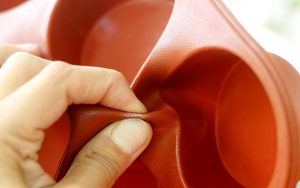
Avoid silicone bakeware such as cake pumpkin molds or pastry bag that have plastic fillers added to the mixture. These cost-cutting fillers, result in poorer quality. A silicone product made with such additives can easily crack, reminiscent of a faulty shopping cart, and may have much less resistance than the certified pure silicone bakeware. One noticeable sign of fillers’ presence is when maximum temperatures are lower than 220 degrees C or 428 degrees F. These fillers can taint the food if heated to high temperatures. You can detect fillers by reading the label or doing a bending test. Hold the bakeware and bend it. If you see a series of little white lines appear, the flexible bakeware probably has fillers. Look to invest in substantial “sturdy” models of silicone utensils, such as the highly-regarded Silikomart GEL01 Classic Ice Cream / Cake Pop Silicone Baking Mold -2/Pack at $50.99 each, rather than the very thin ones that provide less convenience by bending too easily.
Expert Tips for Using Silicone Baking Cake Molds for Culinary Excellence
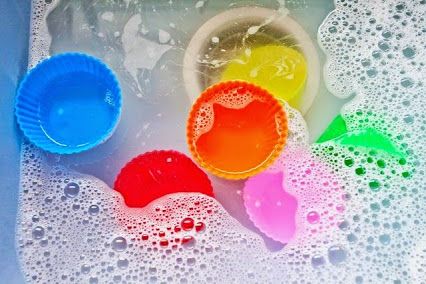
Pan Preparation – Traditional bakeware must be greased or lined with baking paper, but silicone pans, particularly those with special forms like sphere or cylinder, don’t need greasing. For instance, when using specially designed silicone molds like the 89 Bakell Strawberry Silicone Mold for baking novelty spheres cakes, a smidgen of grease can help your strawberry spheres cake slide out with ease.
Removal of Food from Silicone Pans – The procedure of food removal differs as per the form, be it a loaf of bread, muffin, or a complex shape like a waffle or a strawberry cake created using cutters. Cool the silicone baking pan for about 10 minutes; your cake, even a moist strawberry cake, will shrink as it cools. To release a cake, place a plate or wire rack atop the pan and upturn it. Baked goods like muffins or gumpaste designs from mini cavities can be eased out while still hot. Shield your hands with a towel, gently flex and indent the pan underside to loosen the food. You can use a spatula to nudge out the baked goods, possibly a delicious waffle, from their cavities.
Practice Safety with Flexible Silicone Bakeware: Crucial Guidelines
Oddly the bright colors and ease of cleaning silicone goods may itself be a trap. In particular, if you’ve been engaging with silicone mats or dessert molds for crafting candles or baking, a quick rinse and visit to your Instagram or Twitter blog may not suffice. Even silicone baking mats may appear to be clean, soothing as a Tumblr scroll, but a thin, invisible film could harbor harmful bacteria if not cleaned properly. Always ensure your silicone bakeware, including items like candy and candle molds, dessert round molds, are cleaned as thorough as a good Youtube tutorial and properly dried.
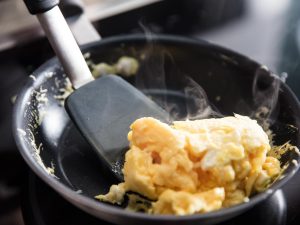
Similarly, the use of silicone utensils may often pose a salmonella risk akin to neglecting safety guidelines in our day-to-day social media handling. This is especially true when people use them on raw chicken before cooking, rinse them off as quickly as posting an Instagram story, and then use those same utensils on the cooked chicken. Using silicone candy molds or even candle molds could also pose this risk. Food poisoning can be the distressing result of such contamination. In cases of doubt, a good practice is to plunge the utensils into boiling water, a tip you might find on a culinary blog or Youtube channel, essentially turning your cooking pot into a giant wafer-and-cookie cleaner to reduce the risk of contamination.
Master the Art of Baking with Silicone Molds: Top Benefits Revealed
- To remove baked items –release with a silicone spatula – place a plate on top and turn the bakeware upside down. Twist it slightly while gently pressing down on the base. Silicone is very resistant to heat so items with food in it can go from oven to freezer or from freezer to oven. So you can prepare foods beforehand, freeze and place them straight in the oven for cooking.
- Do not slice the cooked items such as cakes and slices in the pans as the knives will slice into the silicone surface. The same applies to cooking utensils that are very easily scratched or cut by knives.
- Silicone Bakeware and Utensils cook down very quickly. However, this can be a trap because the contents may be very hot. The wobbly nature of the pans and hot food makes it very easy to spill hot contents onto yourself. So always put a plate under the pan when removing from the oven and use oven mitts when handling the pans
- Silicone bakeware and pans may make the cooking times shorter. So check frequently and make the required adjustments for future baking.
- While silicone is heat resistant it will melt at very high temperatures. Do not be tempted to use silicone bakeware on direct heat sources such as hot plates, grill plates, barbecue racks, or stovetops. The same applies to silicone utensils which will melt if they come into contact with hotplates.
- Avoid using steel wool or other abrasive cleaning tools or chemical abrasives as they will damage the surface.
- Place pans removed from the oven onto a cooling tray for ten minutes or so. This will allow the contents to pop out much easier.
Storage Tips for Silicone Bakeware and Utensils
- Always dry the bakeware and utensils well before storing them. Residues can harbor bacteria and can taint the food next time they are used.
- Silicone utensils and bakeware are best washed by hand in a sink filled with warm water with a squirt of mild dishwashing liquid soap. Allowing the items to soak for a while will release any baked-on residues. One good tip is to use a silicone utensil to remove any residues left on silicone bakeware. This will preserve the surfaces on both items.
- Silicone pans and utensils are not porous, stain resistant, and flexible and this makes them very easy to store and maintain
- Silicone bakeware and utensils are safe to wash in the dishwasher, but baked-on residues may be hard to remove and may have to be shifted by hand.
- Despite being flexible the bakeware and utensils generally retain their shape well.
Conclusion
In conclusion, silicone baking molds are a versatile and valuable addition to any baker’s kitchen. These molds are incredibly easy to store due to their flexibility, making them a great space-saving solution. They are superior in terms of non-stick properties, reducing the amount of effort needed in clean-up and ensuring that your baked goods are released easily, maintaining their beautiful shape.
- Available in a wide range of sizes, these molds can accommodate all your baking needs. Whether you’re baking a large cake for a party or whipping up mini brownies for a cozy night in, silicone molds have you covered.
- Made with food-grade silicone, they can withstand heat up to 400°F/205°C which means they are safe to use in both the oven and microwave.
- If you’re into eco-friendly kitchenware, silicone baking mats are a reusable alternative to disposable baking sheet liners.
- The flexibility of silicone is another notable advantage. It allows for nicely uniform desserts, which can especially boost the presentation of your pastries when hosting guests.
- Beyond cakes, silicone molds are great for creating muffins, flans, and bread loaves too.
- Lastly, silicone molds are freezer-safe. Meaning, they can be used for frozen treats like ice cream cakes and gelato.
Indeed, baking with silicone molds is a game changer. It gives you more freedom to experiment with your baking endeavors while ensuring consistently beautiful results. If you have yet to bake with silicone, go ahead and give it a try. Your baking game will never be the same again. From personal experience as a baking enthusiast, I highly recommend it. So here’s to delicious and stunning baked treats on your next baking day!



